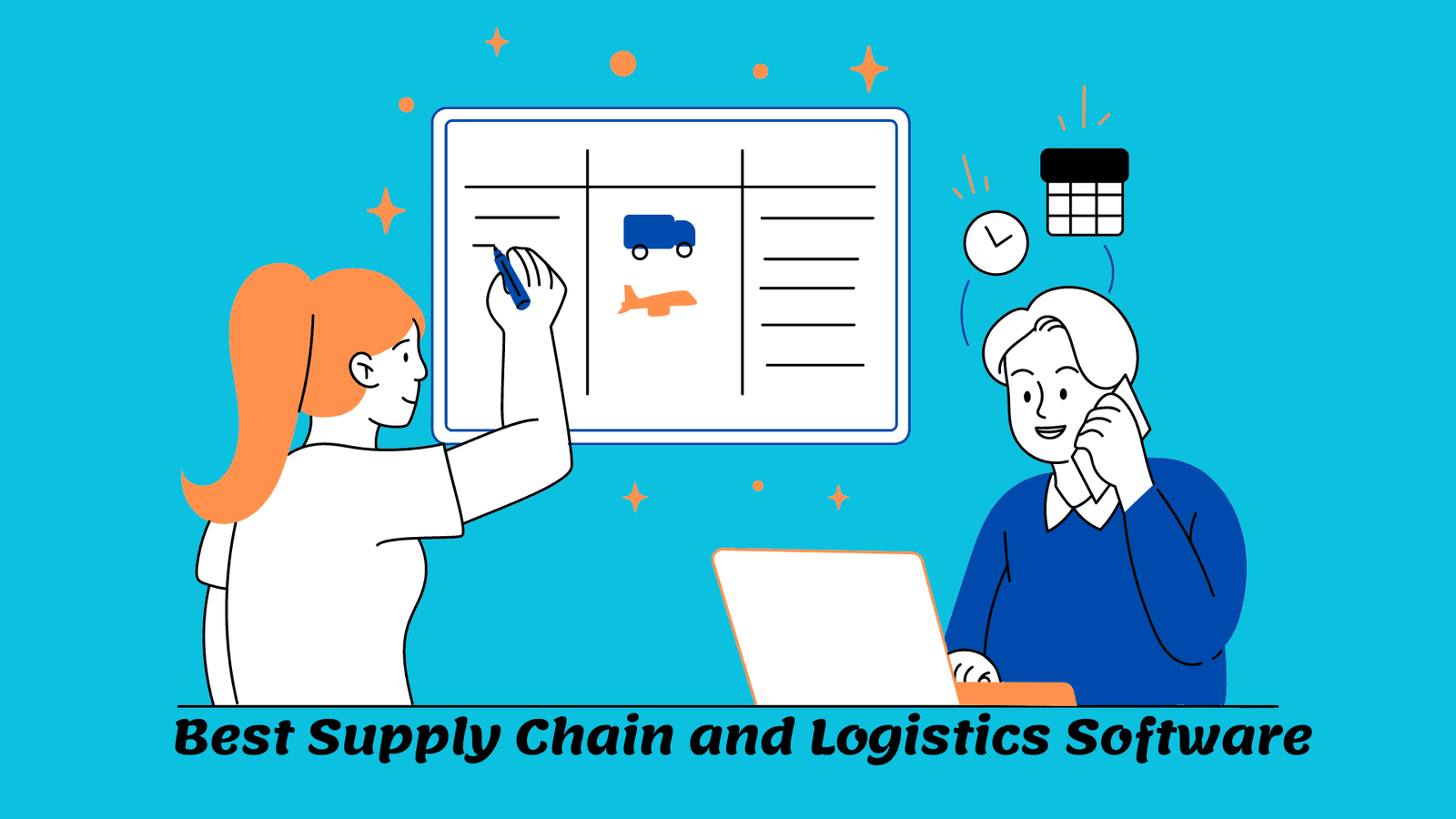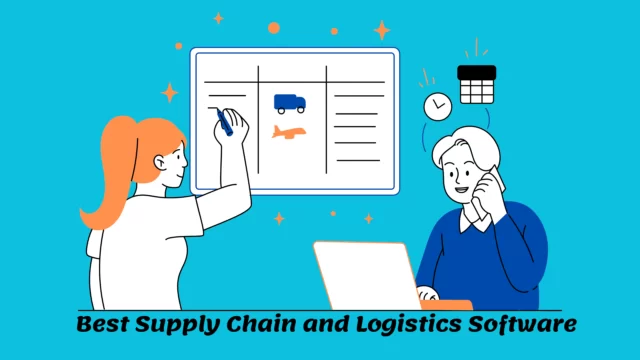Discover the essentials of Supply Chain Management (SCM), a critical framework overseeing the flow of goods and services from raw materials to final products. Learn about key components, benefits, challenges, and future trends in SCM, and explore how leading companies like Amazon, Walmart, and Apple implement effective SCM strategies to stay competitive. Understand the importance of technology and sustainability in modern supply chains and how businesses can leverage these insights for operational efficiency and customer satisfaction.
Understanding Supply Chain Management: Definition, Examples, Importance, Benefits, and Limitations
Supply Chain Management (SCM) is a critical framework that oversees the flow of goods and services from the initial stages of raw material acquisition to the delivery of the final product to the consumer. It encompasses a comprehensive range of activities and processes, including procurement, production, distribution, and logistics. The primary goal of SCM is to streamline these processes to enhance efficiency, reduce costs, and ensure the timely delivery of products.
The concept of supply chain management has evolved significantly over the years. Historically, the focus was primarily on production and logistics. But today, SCM involves a more integrated approach that includes strategic planning, demand forecasting, and supplier relationship management. This evolution reflects the increasing complexity of global trade and the need for businesses to adapt to dynamic market conditions.
Key components of SCM include procurement, where raw materials and components are sourced; production, where these materials are transformed into finished goods; distribution, which involves the storage and transportation of products; and logistics, which ensures the coordination and management of the entire supply chain. Each component plays a vital role in ensuring that products move efficiently and effectively from suppliers to customers.
In the contemporary global economy, the relevance of supply chain management cannot be overstated. Businesses operate in a highly competitive environment, and effective SCM can be a significant differentiator. It enables companies to respond promptly to market demands, manage risks, and improve overall customer satisfaction. With advancements in technology and increasing globalization, the scope and significance of supply chain management continue to expand. Making it an indispensable aspect of modern business operations.
Key Concepts and Terminology
Supply Chain Management (SCM) encompasses various essential concepts and terminology that are critical for understanding its framework and functionality. At its core, the supply chain refers to the interconnected network of entities involved in producing, handling, and distributing a product, from raw material suppliers to end consumers. Within this network, the supply chain network represents the complex web of relationships and flows of goods, information, and finances among these entities.
Logistics is a fundamental component of SCM, focusing on the efficient movement and storage of goods within the supply chain. This includes transportation, warehousing, and inventory management, which ensures that products are available where and when needed. Demand forecasting is another pivotal concept, involving data analytics to predict future consumer demand. Enabling companies to better match supply with demand and minimize excess inventory.
Inventory management involves overseeing the ordering, storage, and use of materials and products. Balancing the costs associated with holding inventory against the need to meet customer demand. Just-in-time (JIT) production is a strategy that aims to minimize inventory by producing goods only as they are needed in the production process, thereby reducing waste and improving efficiency.
Understanding the distinction between upstream and downstream supply chain activities is crucial. Upstream activities involve the initial stages of the supply chain, such as sourcing raw materials and components from suppliers. Downstream activities, on the other hand, focus on delivering the finished product to the end consumer, encompassing processes like distribution, marketing, and sales.
Various stakeholders play critical roles in the supply chain, each contributing to its overall efficiency and effectiveness. Suppliers provide raw materials and components, manufacturers convert these inputs into finished products. Distributors handle the distribution of these products to different markets, and retailers sell the products to the final consumers. Effective collaboration and coordination among these stakeholders are essential for a seamless and responsive supply chain.
Examples of Supply Chain Management
Examining real-world examples of successful supply chain management (SCM) provides valuable insights into how effective strategies can drive business success. Prominent companies such as Amazon, Walmart, and Apple have implemented robust SCM practices that have significantly contributed to their market dominance.
Amazon’s supply chain is a paragon of efficiency and innovation. Utilizing advanced algorithms and artificial intelligence, Amazon ensures optimal inventory levels and swift delivery times. Their network of fulfillment centers, coupled with a sophisticated logistics system, allows them to meet customer demands rapidly and reliably. Amazon’s investment in last-mile delivery, including the use of drones and autonomous vehicles, further exemplifies its commitment to SCM excellence.
Walmart, another SCM leader, leverages its vast distribution network to maintain competitive pricing and high product availability. Their cross-docking system minimizes storage costs by directly transferring goods from inbound to outbound trucks. Walmart’s integration of radio-frequency identification (RFID) technology enhances inventory tracking and visibility. Ensuring timely replenishment of stock and reducing instances of out-of-stock items.
Apple’s approach to SCM is characterized by meticulous supplier management and product innovation. By maintaining close relationships with key suppliers and investing in their capabilities, Apple secures a steady supply of high-quality components. Their just-in-time (JIT) manufacturing model reduces excess inventory and aligns production schedules with real-time demand. This strategic approach ensures that Apple can rapidly adapt to market changes while maintaining product quality and customer satisfaction.
Beyond the tech and retail giants, SCM plays a crucial role in various industries. In the automotive sector, companies like Toyota have pioneered lean manufacturing techniques, significantly reducing waste and improving production efficiency. The food and beverage industry relies on SCM to ensure the timely delivery of perishable goods. Companies like Nestlé implement stringent quality control measures and sustainable sourcing practices. The pharmaceutical industry also benefits from SCM by ensuring the safe and efficient distribution of medications. As demonstrated by companies such as Pfizer during the COVID-19 vaccine rollout.
These examples underscore the diverse applications and critical importance of supply chain management across different sectors. Effective SCM strategies not only streamline operations but also enhance customer satisfaction and contribute to overall business success.
Importance of Supply Chain Management
Supply Chain Management (SCM) plays a pivotal role in the success of modern businesses. Efficient SCM can lead to significant cost savings by optimizing processes, reducing waste, and minimizing delays. By effectively managing the supply chain, companies can ensure that they have the right products at the right time. Which directly contributes to improved customer satisfaction. When customers receive their orders promptly and in perfect condition, it enhances their trust and loyalty towards the brand.
Moreover, SCM provides businesses with a competitive advantage. Companies that excel in supply chain management can respond faster to market demands and changes, giving them an edge over competitors. This flexibility is crucial in today’s fast-paced market environment, where consumer preferences and trends can shift rapidly.
Risk management is another critical aspect where SCM demonstrates its importance. A well-managed supply chain can identify potential risks early and implement strategies to mitigate them. This includes diversifying suppliers, maintaining safety stock, and developing contingency plans for unforeseen disruptions such as natural disasters or geopolitical events. By proactively addressing risks, businesses can maintain continuity and avoid costly interruptions.
Sustainability is increasingly becoming a focal point for companies, and SCM is integral to achieving environmental goals. Efficient supply chain practices can reduce carbon footprints by optimizing transportation routes, implementing energy-efficient processes, and minimizing waste. These sustainable practices not only help the environment but also enhance the company’s reputation among eco-conscious consumers and stakeholders.
In the context of global trade, SCM is indispensable. It ensures smooth international operations by navigating complex logistics, customs regulations, and varying market conditions. Effective supply chain management allows businesses to expand their reach and tap into new markets, driving growth and profitability.
Finally, SCM is essential for businesses to adapt to market changes and disruptions. Whether dealing with fluctuating demand, technological advancements, or economic shifts, a robust supply chain can help companies remain agile and resilient. By continuously improving supply chain processes and leveraging data-driven insights, businesses can stay ahead of the curve and thrive in a dynamic market landscape.
Benefits of Effective Supply Chain Management
Effective Supply Chain Management (SCM) offers a plethora of advantages that can significantly enhance a company’s operations. One of the most notable benefits is the reduction in operational costs. By optimizing supply chain processes, businesses can minimize waste, reduce redundancies, and achieve economies of scale. This cost-efficiency is particularly crucial in competitive markets where margins are often thin.
Enhanced efficiency is another critical advantage of effective SCM. Streamlined processes and better resource allocation lead to faster and more accurate fulfillment of orders. This efficiency is not only beneficial for the company but also enhances customer satisfaction by ensuring timely delivery of products. Improved coordination among supply chain partners is a direct result of this efficiency. When all participants in the supply chain—from suppliers to distributors—work collaboratively, it creates a more cohesive and responsive network.
Better product quality is another significant benefit. Effective SCM practices include rigorous quality control measures at every stage of the supply chain. This focus on quality ensures that the end product meets or exceeds customer expectations, thereby enhancing brand reputation and customer loyalty. Additionally, effective SCM facilitates faster delivery times, which is increasingly important in today’s fast-paced market environment. Speedy delivery not only meets customer demands but also reduces the time products spend in the supply chain, further cutting costs.
Increased flexibility is also a hallmark of effective SCM. Companies can quickly adapt to market changes, whether it’s a sudden spike in demand or supply disruptions. This agility is particularly valuable in managing inventory more effectively. Better inventory management reduces the likelihood of stockouts and overstock situations, ensuring that the right amount of product is available at the right time.
Leveraging technology such as artificial intelligence (AI) and blockchain has become indispensable in modern SCM. AI can predict demand trends, optimize routes, and automate repetitive tasks, thereby enhancing overall efficiency. Blockchain technology, on the other hand, provides transparency and traceability, ensuring that all transactions are secure and verifiable. This technological integration streamlines operations and builds trust among supply chain partners.
Challenges and Limitations of Supply Chain Management
Supply Chain Management (SCM) is integral to the success of modern businesses, but it is not without its challenges and limitations. One of the most prevalent issues is supply chain disruptions, which can arise from various sources such as natural disasters, geopolitical events, and regulatory changes. These disruptions can significantly impact the continuity of supply chains, leading to delays, increased costs, and loss of revenue.
Another significant challenge is demand variability. Fluctuations in consumer demand can create a ripple effect throughout the supply chain, making it difficult to maintain optimal inventory levels and production schedules. This unpredictability often leads to either excess inventory or stockouts, both of which are costly for businesses.
The complexity of managing global supply chains is also a notable challenge. With the increasing globalization of markets, companies must coordinate activities across multiple countries, each with its own set of regulations, cultural nuances, and logistics infrastructures. This complexity can result in inefficiencies and increased risks.
Current SCM practices are often limited by the reliance on outdated technology. Many organizations still use legacy systems that lack the capabilities to provide real-time data and analytics. This lack of visibility makes it difficult to make informed decisions and respond swiftly to changes in the supply chain environment.
Coordination issues among supply chain partners further exacerbate these challenges. Effective SCM requires seamless collaboration and communication between all parties involved. However, disparate systems and misaligned objectives can hinder this coordination, leading to inefficiencies and conflicts.
External factors, such as geopolitical events and natural disasters, can also have a profound impact on supply chains. Geopolitical tensions can lead to trade restrictions and tariffs, while natural disasters can disrupt transportation and production. Regulatory changes, such as new compliance requirements, can add additional layers of complexity and cost to supply chain operations.
Addressing these challenges requires a multifaceted approach, including the adoption of advanced technologies, improved collaboration among supply chain partners, and proactive risk management strategies. While the limitations of SCM cannot be eliminated, they can be mitigated through strategic planning and continuous improvement efforts.
Future Trends in Supply Chain Management
The landscape of supply chain management (SCM) is undergoing rapid transformation, driven by several emerging trends and technological advancements. One of the most significant trends is the increasing adoption of digital technologies. Companies are leveraging digital tools to enhance visibility, optimize operations, and improve overall efficiency. Technologies such as blockchain and cloud computing are becoming integral components, providing secure, real-time data sharing and seamless integration across various supply chain functions.
The rise of e-commerce is another pivotal trend reshaping SCM. The shift towards online shopping has necessitated more agile and responsive supply chains. Businesses are investing in advanced logistics solutions, such as automated warehouses and last-mile delivery innovations, to meet the growing expectations of consumers for faster and more reliable service.
Sustainability is also gaining prominence within supply chain practices. Organizations are increasingly focusing on reducing their environmental footprint by adopting eco-friendly practices and sustainable sourcing. This shift is not only driven by regulatory pressures but also by consumer demand for more responsible and ethical business practices. Resilience, too, has become a focal point, especially in light of recent global disruptions. Companies are prioritizing the development of resilient supply chains capable of withstanding unforeseen challenges and ensuring continuity.
Advancements in artificial intelligence (AI) and machine learning (ML) are revolutionizing SCM by enabling predictive analytics and intelligent automation. These technologies facilitate better demand forecasting, inventory management, and resource allocation, thereby enhancing decision-making processes. Similarly, the Internet of Things (IoT) is transforming supply chains by providing real-time tracking and monitoring of goods, which helps in reducing losses and improving operational efficiency.
Data analytics and the availability of real-time information are becoming increasingly vital in SCM. Leveraging big data allows companies to gain deeper insights into their supply chain operations, identify bottlenecks, and implement data-driven strategies to optimize performance. The future of SCM will undoubtedly be shaped by these technological advancements, as they offer unprecedented opportunities for innovation and improvement.
Conclusion and Key Takeaways
Supply Chain Management (SCM) plays a crucial role in the seamless operation of businesses across various industries. By efficiently managing the flow of goods, information, and finances from the point of origin to the final consumer, SCM ensures that businesses can meet customer demands, reduce costs, and enhance overall operational efficiency.
Throughout this blog post, we have delved into the definition of SCM, providing a comprehensive understanding of its components and processes. We explored various examples that highlight the practical applications of SCM in real-world scenarios. Additionally, the importance of SCM in driving business success was underscored, emphasizing how effective supply chain strategies can lead to significant competitive advantages.
The benefits of SCM are manifold, including improved customer satisfaction, reduced operational costs, and enhanced flexibility to respond to market changes. However, SCM also comes with its own set of limitations, such as the complexity of managing extensive supply networks and the potential for disruptions due to external factors like natural disasters or geopolitical tensions.
For businesses to remain competitive, it is imperative that they continuously evolve their SCM strategies. This involves adopting advanced technologies, such as artificial intelligence and blockchain, to improve transparency, efficiency, and decision-making processes. Furthermore, fostering strong relationships with suppliers and other stakeholders can help mitigate risks and ensure a more resilient supply chain.
In light of these insights, businesses seeking to improve their SCM processes should focus on strategic planning, leveraging technology, and building collaborative partnerships. By doing so, they can not only enhance their operational performance but also position themselves for sustained growth and success in an increasingly dynamic market environment.










